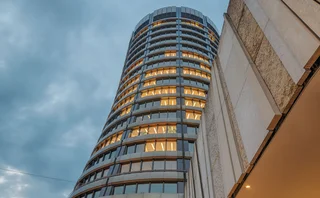
GFXC publishes final word on last look
The GFXC releases new and final version of Principle 17; adds two examples to illustrate best practice

The Global Foreign Exchange Committee has published the final wording of Principle 17 of the FX Global Code of Conduct, removing the word ‘likely’ from the new version of the text and stating that market participants should not utilise clients’ trading information in the last-look window.
The GFXC also published its response to the 33 papers it received for the consultation on the principle, noting that two-thirds of respondents viewed trading activity during the last-look window as inconsistent with good market practice and not beneficial to clients.
“Market participants should not conduct trading activity that utilises the information from the client’s trade request during the last-look window. Such trading activity would include (1) any pricing activity on e-trading platforms that incorporates information from the trade request and (2) any hedging activity that incorporates information from the trade request,” states the updated version of Principle 17.
“Such activity would risk signalling to other market participants the client’s trading intent, and could move market prices against the client. In the event that the client’s trade requests were subsequently rejected, such trading activity could disadvantage the client.”
But while tightening the wording around the practice, the GFXC also exempted certain trading practices from the principle, such as cover and deal, and added two further examples to the code to illustrate best practices.
The GFXC says the guidance does not apply if: there is an explicit understanding that liquidity providers will fill the client’s trade request without taking on market risk in connection with the trade request by first entering into offsetting transactions in the market; at the same time, volumes traded in the last-look window are passed on to the client in its entirety; and, finally, the arrangement is appropriately documented and disclosed to clients.
If a trading arrangement satisfies all three of the above conditions, it is exempt from Principle 17, the committee decided, citing the practice of cover and deal as an example.
The GFXC also published the results of its survey of market participants, gauging the level of awareness around the code, which revealed that within the nine months of the principles being published, the majority of market participants have read at least some of the principles.
Survey respondents also said that they expect to scale down or cease their trading with firms that do not sign a statement of commitment.
“The revised guidance on last look demonstrates that the GFXC is committed to ensuring the FX Global Code keeps pace with a fast evolving market. This will support our objective of improving market practice and rebuilding trust in the FX market. With the last-look consultation completed, the priority for the first half of 2018 is to promote widespread commitment to the code,” says Chris Salmon, chair of the GFXC, in a statement.
Anonymous platforms
The GFXC agreed it would establish additional working groups to further investigate the role of cover and deal and similar trading models in FX markets, while it also decided to investigate the role that disclosures can play in establishing clarity around the trading practices of market participants, and another working group will consider the potential addition of pre-hedging examples to the code.
Trading on anonymous platforms will also be studied, especially with regard to disclosures and monitoring of behaviours. In responses to the GFXC’s consultation, market participants flagged the difficulties around understanding and detecting how liquidity providers trade in the last-look window.
“It was suggested that the code provide guidance on what market participants should do in regard to transparency and disclosure in these circumstances. Some made suggestions for how e-trading platforms could play a greater role in this area, such as by facilitating the disclosure of each liquidity providers’ last-look practices, imposing uniform standards on liquidity providers in regard to last look, or operating any last-look functionality themselves,” says the GFXC’s statement.
As a result, the committee agreed to undertake further work on disclosures, particularly regarding anonymous e-trading platforms, with a view to considering ways of improving the effectiveness and consistency of disclosures provided to clients.
“Since the launch of the code in May, the GFXC has been working to resolve outstanding issues and consistently identify new areas of focus to ensure that the principles evolve seamlessly with good market practice. In this instance, we received meaningful market feedback to which the GFXC responded appropriately and in a timely manner. Our focus will now shift to encouraging the broad adoption of the code by all major market participants during the first half of 2018,” says David Puth, vice-chair of the GFXC and chief executive of settlement utility CLS, in the statement.
Only users who have a paid subscription or are part of a corporate subscription are able to print or copy content.
To access these options, along with all other subscription benefits, please contact customer services - www.fx-markets.com/static/contact-us, or view our subscription options here: https://subscriptions.fx-markets.com/subscribe
You are currently unable to print this content. Please contact customer services - www.fx-markets.com/static/contact-us to find out more.
You are currently unable to copy this content. Please contact info@fx-markets.com to find out more.
Copyright Infopro Digital Limited. All rights reserved.
You may share this content using our article tools. Printing this content is for the sole use of the Authorised User (named subscriber), as outlined in our terms and conditions - https://www.infopro-insight.com/terms-conditions/insight-subscriptions/
If you would like to purchase additional rights please email info@fx-markets.com
Copyright Infopro Digital Limited. All rights reserved.
You may share this content using our article tools. Copying this content is for the sole use of the Authorised User (named subscriber), as outlined in our terms and conditions - https://www.infopro-insight.com/terms-conditions/insight-subscriptions/
If you would like to purchase additional rights please email info@fx-markets.com
More on Regulation
European funds face upsurge in settlement risk after T+1
Trade body Efama finds up to 40% of daily FX flows may have to settle outside protection of CLS
Basel Committee prepares crackdown on bank ‘window dressing’
Study says lenders have obscured their true systemic importance at reporting dates
Emir 3.0 threatens lag for Simm revisions
New EU rules could stall changes aimed at improving risk sensitivity of industry margin models
US dealers slam capital hit on clearing for unreal CVA risk
Fed would diverge from Basel standards by imposing CVA capital on client-cleared trades
In a world of uncleared margin rules, Isda Simm adapts and evolves
A look back at progress and challenges one year on from UMR and Phase 6 implementation
Dealers braced for Taiwan swaps clearing mandate
Expected FSC directive on TWD interest rate swaps could spur growth in FX clearing, say bank execs
Clearing members fear CFTC bending rules for crypto
Critics warn new framework for Bitnomial and LedgerX could undermine clearing integrity
Regulators’ FRTB estimates based on faulty premise – industry study
US market risk capital requirements could more than double if banks abandon IMA







